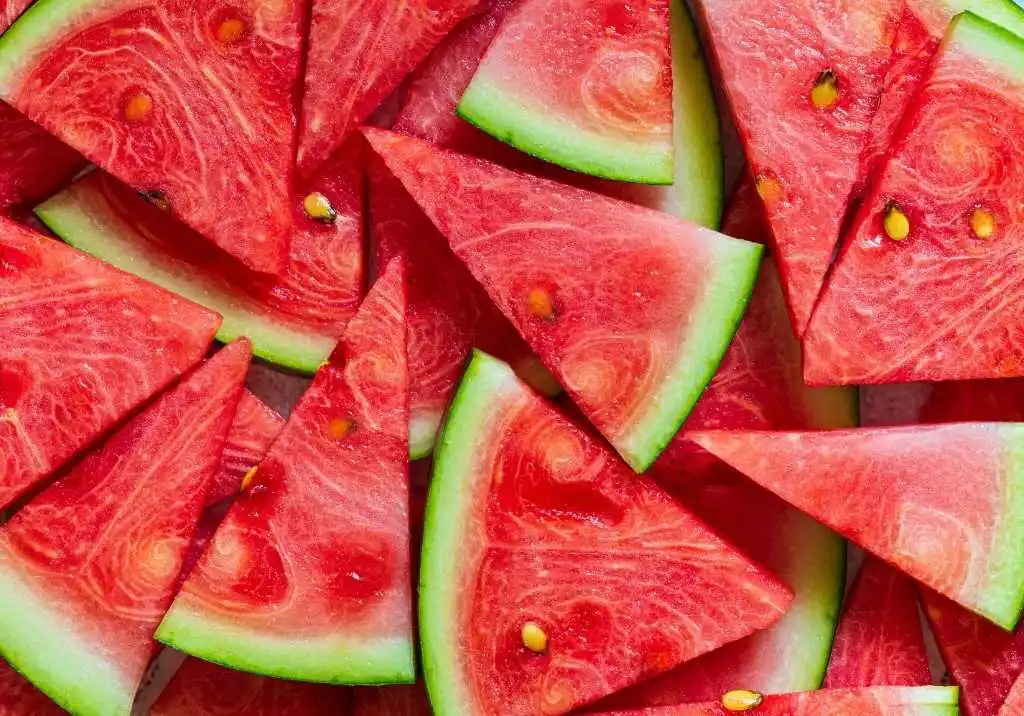Watermelon, the quintessential summer fruit, is more than just a sweet treat for hot days. Beneath its vibrant green rind and juicy red interior lies a world of surprising facts, health benefits, and clever uses you probably haven’t explored yet. Let’s dive into the juicy details and discover why this humble fruit deserves a spotlight in your kitchen and beyond.
1. Watermelon’s Ancient Roots
Did you know watermelons have been enjoyed for over 5,000 years? Originating in Africa, they were cultivated not just for their sweetness but as a vital water source in arid regions. Early watermelons were more bitter than sweet, and their primary appeal was their hydrating quality.
Fast forward to today, watermelon is a global favorite, with over 1,200 varieties grown worldwide—from deep red to yellow and even orange flesh!
2. Watermelon is 92% Water—But It’s So Much More
While watermelon is often celebrated for its high water content, making it a refreshing hydrator, it’s also packed with nutrients:
- Lycopene: This antioxidant gives watermelon its red color and supports heart health, skin protection, and even cancer prevention. Surprisingly, watermelon has more lycopene than tomatoes!
- Vitamin C: Boosts immunity and supports glowing skin.
- Vitamin A: Great for vision and skin health.
- Potassium: Helps balance fluids and supports muscle function.
3. Rind and Seeds: The Overlooked Powerhouses
Most people toss the rind and seeds, but both are edible and loaded with benefits.
- Rind: The green outer layer is rich in fiber and citrulline, an amino acid linked to improved blood flow and reduced muscle soreness. Try blending it into smoothies or pickling it for a tangy side dish.
- Seeds: Forget spitting them out—roast watermelon seeds for a crunchy, protein-packed snack. They’re similar to pumpkin seeds but offer a subtler flavor.
4. Choosing the Perfect Watermelon
Picking a ripe watermelon can feel like a guessing game, but these tips will make you a pro:
- Look for a Field Spot: The creamy yellow patch on the rind indicates where the melon rested on the ground while ripening. A darker, more golden field spot means a sweeter fruit.
- Knock on It: A ripe watermelon will produce a deep, hollow sound when tapped.
- Check the Weight: A ripe watermelon feels heavy for its size, indicating it’s full of juicy goodness.
- Inspect the Stem: A dry, brown stem suggests the watermelon was harvested at peak ripeness.
5. Beyond the Slice: Creative Ways to Use Watermelon
Watermelon is more versatile than you think. Here are some creative ways to enjoy it:
- Grilled Watermelon Steaks: Brush watermelon slices with olive oil and grill them for a smoky, savory twist. Perfect for summer barbecues!
- Watermelon Salsa: Dice watermelon, cucumber, red onion, and jalapeño. Toss with lime juice and cilantro for a refreshing dip.
- Watermelon Sorbet: Blend frozen watermelon chunks with a splash of lime juice for a simple, healthy dessert.
- Cocktail Base: Watermelon juice makes a delicious base for cocktails or mocktails. Try mixing it with mint and sparkling water for a refreshing spritzer.
- Pickled Rind: Don’t waste the rind—pickle it with vinegar, sugar, and spices for a tangy, crunchy condiment.
6. Watermelon for Beauty and Wellness
Watermelon isn’t just for eating; it can be a secret ingredient in your skincare routine. Its high water content and vitamins make it a natural hydrator for your skin.
- DIY Watermelon Face Mask: Blend watermelon with a teaspoon of honey and apply it to your face for 10-15 minutes. Rinse off for refreshed, glowing skin.
- Post-Workout Recovery: The citrulline in watermelon helps reduce muscle soreness, making it a great post-exercise snack or smoothie ingredient.
7. Fun Facts to Impress Your Friends
- Seedless Watermelons Aren’t GMO: They’re a hybrid variety created through cross-breeding techniques, not genetic modification.
- It’s a Berry: Botanically speaking, watermelon is classified as a pepo, a type of berry with a thick rind.
- World’s Heaviest Watermelon: The record-breaking watermelon weighed a whopping 350.5 pounds (159 kg) and was grown in Arkansas, USA.
8. Storage Tips for Maximum Freshness
- Whole Watermelon: Store at room temperature until cut. This keeps the fruit sweet and flavorful.
- Cut Watermelon: Wrap tightly in plastic or place in an airtight container and refrigerate. Consume within 3-5 days for the best taste.
9. A Sustainable Choice
Watermelon is one of the most environmentally friendly fruits to grow. It requires less water compared to many other crops and produces minimal waste if you use the rind and seeds creatively.
To Sum It Up: Beyond a Summer Snack
Watermelon is a fruit that keeps on giving—hydration, nutrition, and a world of culinary possibilities. Whether you’re snacking on slices, whipping up creative dishes, or using it for skincare, this vibrant fruit proves it’s more than meets the eye.
So, the next time you grab a watermelon, think beyond the slice and explore all the surprising ways this amazing fruit can enrich your life.
What’s your favorite way to enjoy watermelon? Share your ideas in the comments below!



